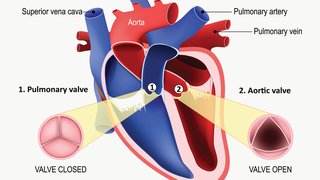
Nearly 50 years ago, our researchers conducted a study that reversed how doctors think about exercise for heart attack patients.
Findings in the Dallas Bed Rest and Training Study influenced the medical world to begin prescribing exercise and building up cardiac muscle for heart attack patients rather than a long period of bed rest, as had been the standard practice.
Now we’re studying whether exercise can have similar positive effects for patients with pulmonary hypertension.
What is pulmonary hypertension?
Pulmonary hypertension, also called pulmonary arterial hypertension (PAH), is a condition in which high blood pressure is present in the arteries leading to the lungs. Common symptoms include:
- Fatigue
- Shortness of breath
- Dizziness
- Chest pain (angina)
- Fainting spells (syncope)
- Irregular heart beat
- Bluish skin and lips
These symptoms are vague, and patients may believe they are just out of shape and not realize anything is seriously wrong. But pulmonary hypertension is quite serious and can lead to swelling in the legs or abdomen, severe shortness of breath, or, in advanced cases, right-sided heart failure.
Pulmonary hypertension can arise due to other heart conditions, such as congenital heart disease or blood clots. It also can arise due to liver or lung diseases, or on its own without any underlying condition. Because the causes can vary greatly, pulmonary hypertension patients undergo a series of tests, including:
- Echocardiogram to measure how well the heart is working
- Oximetry to measure oxygen levels in the blood
- Chest X-rays and lung function tests to check for lung disease
- VQ scan to check for blood clots in the lung
How does exercise fit into pulmonary hypertension treatment?
Pulmonary hypertension treatment options have improved in recent years, with a number of new medications available. But exercise has not generally been part of treatment because many clinicians feared exercise might put further strain on the heart.
In fall 2015, Dr. Ambarish Pandey and I worked with a team of our colleagues to complete a systematic review and meta-analysis of previously conducted studies of patients with pulmonary hypertension to see how exercise affected them. Our meta-analysis found that exercise was associated with several measures of heart function and overall quality of life.
Patients who exercised experienced improvements in peak exercise heart rate and decreased blood pressure. In addition, patients who exercised also experienced improvements in a range of subjective measures of health status, including improvements in emotional health and mental health. But these findings do not mean that patients with pulmonary hypertension should dive into an exercise program on their own.
Many of the studies we looked at involved physician-supervised exercise training and low-intensity levels of activity such as walking, cycling, and light weight lifting. It’s important for pulmonary hypertension patients to talk with their physicians before beginning an exercise program. The doctor can help them determine how much exercise is appropriate and which activities will offer the most benefit.
Our meta-analysis and the increasing body of knowledge certainly reinforces my belief that exercise is a key to heart health. The role of exercise is particularly important for patients with pulmonary hypertension.
Are you interested in learning more about emerging research and other heart-health topics? Sign up for our email notifications – we’ll let you know when a new blog posts each week.










